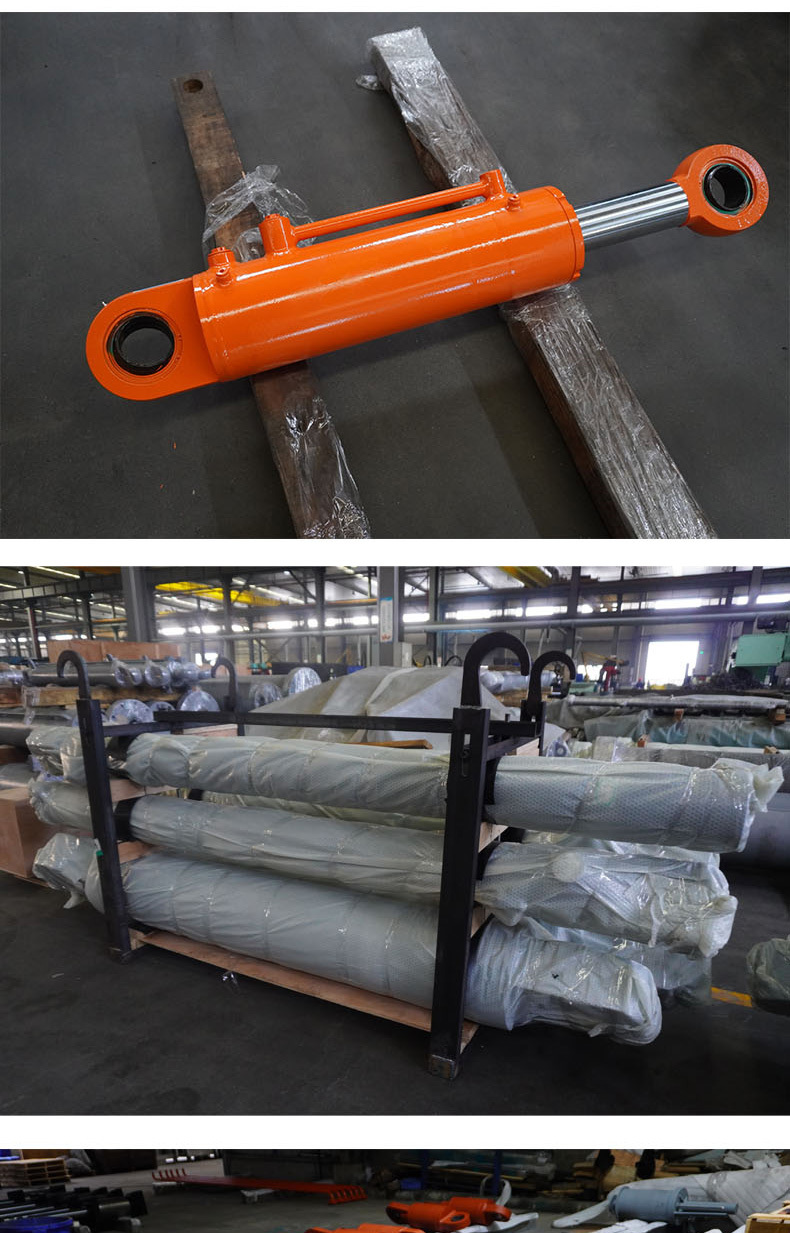The Essential Role of Hydraulic Cylinders in Automobile Cranes
2025-05-22
Hydraulic cylinders are a crucial component in the operation of automobile cranes, providing the necessary force and movement to lift and maneuver heavy loads. These cylinders work on the principles of hydraulics, utilizing fluid pressure to create linear motion. In this article, we will explore the workings of hydraulic cylinders, their applications in automobile cranes, and the importance of maintaining these systems for optimal performance.
At the core of a hydraulic cylinder is a piston that moves within a cylindrical chamber filled with hydraulic fluid. When pressure is applied to the fluid, it forces the piston to move, which in turn extends or retracts the arm of the crane. This mechanism allows for precise control over the lifting process, making hydraulic cylinders indispensable for tasks that involve heavy lifting and precise positioning.
In automobile cranes, hydraulic cylinders are often employed for various functions, including lifting the crane's boom and extending the reach of the lifting arm. The ability to lift heavy loads safely and efficiently makes hydraulic cranes essential in construction, manufacturing, and other industrial applications. These cranes not only enhance productivity but also ensure the safety of workers by providing reliable lifting solutions.
One of the critical aspects of maintaining hydraulic cylinders is ensuring that the hydraulic fluid levels are adequate and that the fluid is free of contaminants. Regular inspections and maintenance can prevent leaks, which can lead to loss of pressure and inefficient operation. Furthermore, keeping an eye on the seals and fittings is essential, as wear and tear can compromise the cylinder's performance.
The versatility of hydraulic cylinders in automobile cranes extends beyond just lifting. They can also be used for tilting, rotating, and stabilizing loads, which adds to their functionality. This adaptability is especially important in dynamic work environments where conditions can change rapidly, requiring cranes to perform various tasks with precision.
In summary, hydraulic cylinders are integral to the functionality of automobile cranes, providing the power and control needed to lift and move heavy objects safely. Their design and operation are rooted in hydraulic principles, making them efficient and reliable in industrial settings. Understanding the significance of hydraulic cylinders not only helps in appreciating their role in crane operations but also emphasizes the importance of regular maintenance to ensure their longevity and effectiveness. By keeping these systems in optimal condition, industries can benefit from enhanced safety, productivity, and operational efficiency.
At the core of a hydraulic cylinder is a piston that moves within a cylindrical chamber filled with hydraulic fluid. When pressure is applied to the fluid, it forces the piston to move, which in turn extends or retracts the arm of the crane. This mechanism allows for precise control over the lifting process, making hydraulic cylinders indispensable for tasks that involve heavy lifting and precise positioning.
In automobile cranes, hydraulic cylinders are often employed for various functions, including lifting the crane's boom and extending the reach of the lifting arm. The ability to lift heavy loads safely and efficiently makes hydraulic cranes essential in construction, manufacturing, and other industrial applications. These cranes not only enhance productivity but also ensure the safety of workers by providing reliable lifting solutions.
One of the critical aspects of maintaining hydraulic cylinders is ensuring that the hydraulic fluid levels are adequate and that the fluid is free of contaminants. Regular inspections and maintenance can prevent leaks, which can lead to loss of pressure and inefficient operation. Furthermore, keeping an eye on the seals and fittings is essential, as wear and tear can compromise the cylinder's performance.
The versatility of hydraulic cylinders in automobile cranes extends beyond just lifting. They can also be used for tilting, rotating, and stabilizing loads, which adds to their functionality. This adaptability is especially important in dynamic work environments where conditions can change rapidly, requiring cranes to perform various tasks with precision.
In summary, hydraulic cylinders are integral to the functionality of automobile cranes, providing the power and control needed to lift and move heavy objects safely. Their design and operation are rooted in hydraulic principles, making them efficient and reliable in industrial settings. Understanding the significance of hydraulic cylinders not only helps in appreciating their role in crane operations but also emphasizes the importance of regular maintenance to ensure their longevity and effectiveness. By keeping these systems in optimal condition, industries can benefit from enhanced safety, productivity, and operational efficiency.
Questions?
We are here to help.







